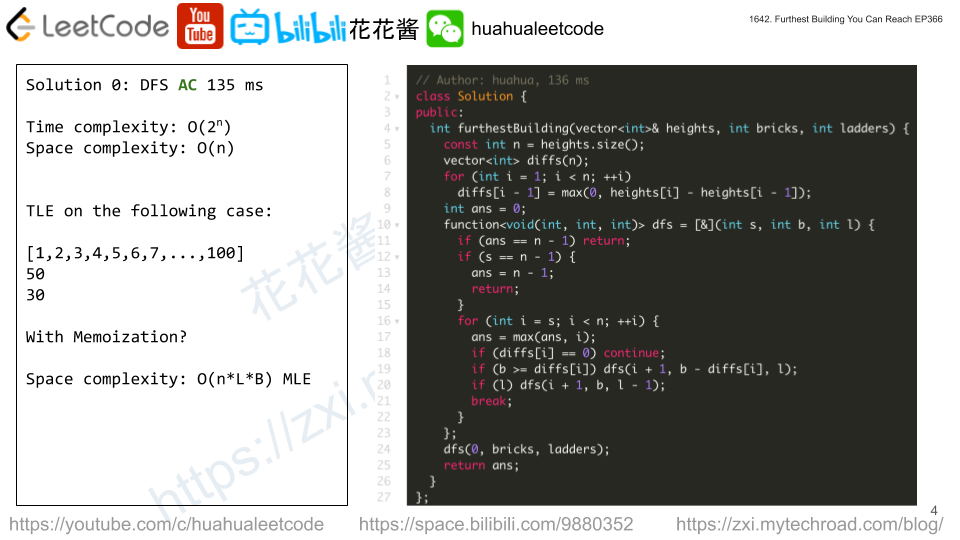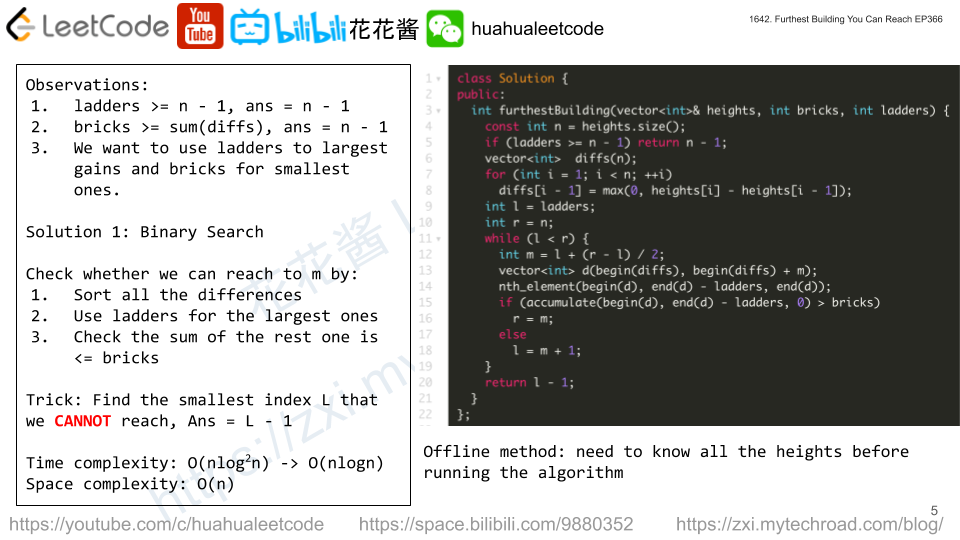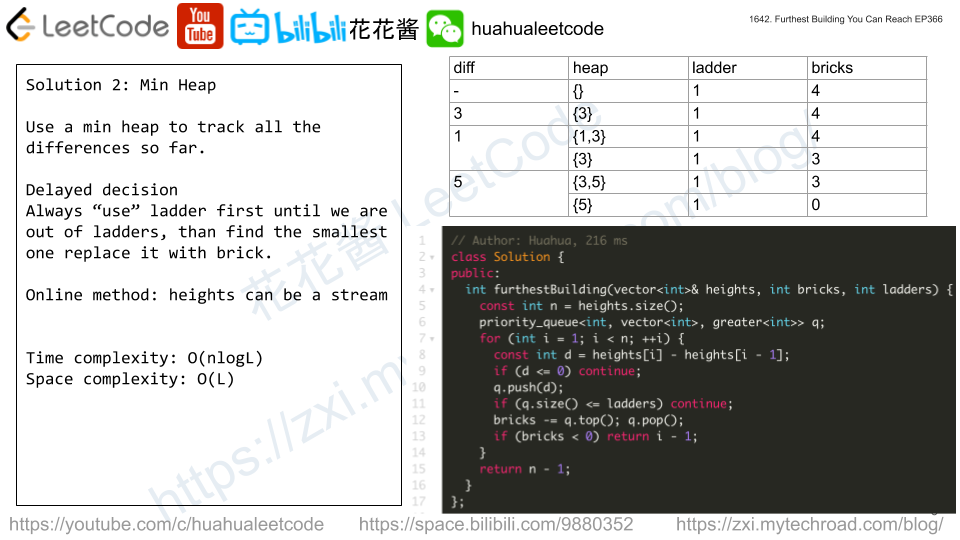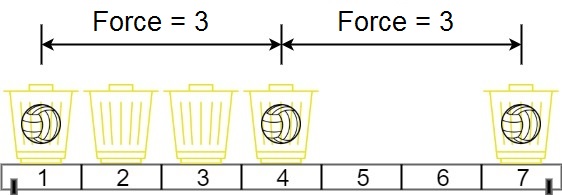(This problem is an interactive problem.)
You may recall that an array A is a mountain array if and only if:
A.length >= 3- There exists some
iwith0 < i < A.length - 1such that:A[0] < A[1] < ... A[i-1] < A[i]A[i] > A[i+1] > ... > A[A.length - 1]
Given a mountain array mountainArr, return the minimum index such that mountainArr.get(index) == target. If such an index doesn’t exist, return -1.
You can’t access the mountain array directly. You may only access the array using a MountainArray interface:
MountainArray.get(k)returns the element of the array at indexk(0-indexed).MountainArray.length()returns the length of the array.
Submissions making more than 100 calls to MountainArray.get will be judged Wrong Answer. Also, any solutions that attempt to circumvent the judge will result in disqualification.
Example 1:
Input: array = [1,2,3,4,5,3,1], target = 3 Output: 2 Explanation: 3 exists in the array, at index=2 and index=5. Return the minimum index, which is 2.
Example 2:
Input: array = [0,1,2,4,2,1], target = 3
Output: -1
Explanation: 3 does not exist in the array, so we return -1.
Constraints:
3 <= mountain_arr.length() <= 100000 <= target <= 10^90 <= mountain_arr.get(index) <= 10^9
Solution: Binary Search
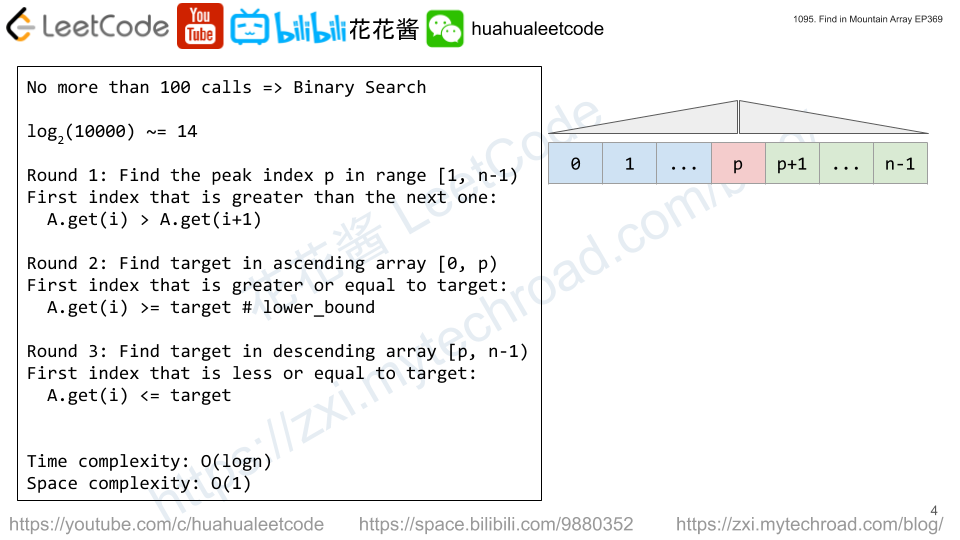
- Find the peak index of the mountain array using binary search.
- Perform two binary searches in two sorted subarrays (ascending one and descending one)
Time complexity: O(logn)
Space complexity: O(1)
C++
|
1 2 3 4 5 6 7 8 9 10 11 12 13 14 15 16 17 18 19 20 21 22 23 24 25 26 27 28 29 30 31 32 33 34 35 36 |
class Solution { public: int findInMountainArray(int target, MountainArray &mountainArr) { const int n = mountainArr.length(); auto binary_search = [&](int l, int r, function<bool(int)> cond) { while (l < r) { int m = l + (r - l) / 2; if (cond(m)) r = m; else l = m + 1; } return l; }; int p = binary_search(0, n - 1, [&](int i) -> bool { return mountainArr.get(i) > mountainArr.get(i + 1); }); // if (target > mountainArr.get(p)) return -1; // if (target == mountainArr.get(p)) return p; int l = binary_search(0, p, [&](int i) -> bool { return mountainArr.get(i) >= target; }); if (mountainArr.get(l) == target) return l; int r = binary_search(p, n - 1, [&](int i) -> bool { return mountainArr.get(i) <= target; }); if (mountainArr.get(r) == target) return r; return -1; } }; |
python3
|
1 2 3 4 5 6 7 8 9 10 11 12 13 14 15 16 |
class Solution: def findInMountainArray(self, target: int, arr: 'MountainArray') -> int: def binary_search(l, r, cond): while l < r: m = l + (r - l) // 2 if cond(m): r = m else: l = m + 1 return l n = arr.length() p = binary_search(0, n - 1, lambda i: arr.get(i) > arr.get(i + 1)) l = binary_search(0, p, lambda i: arr.get(i) >= target) if arr.get(l) == target: return l r = binary_search(p, n - 1, lambda i: arr.get(i) <= target) if arr.get(r) == target: return r return -1 |

